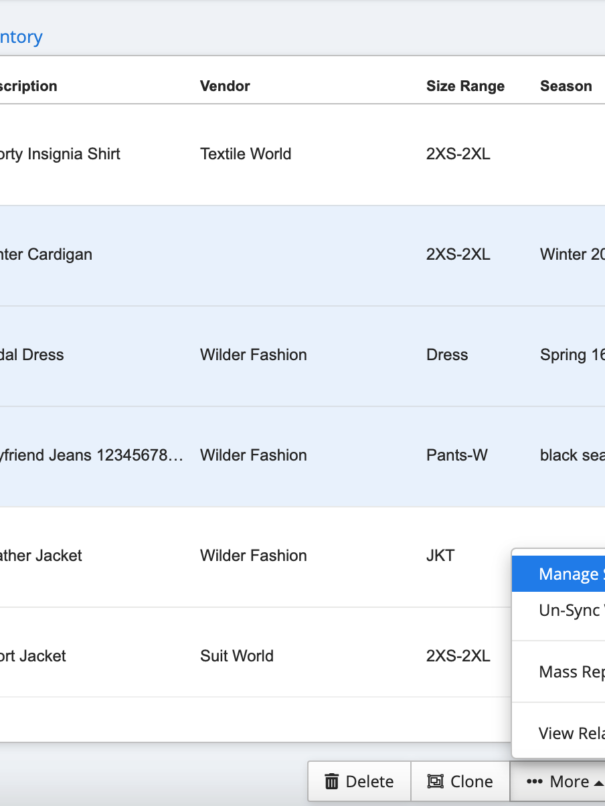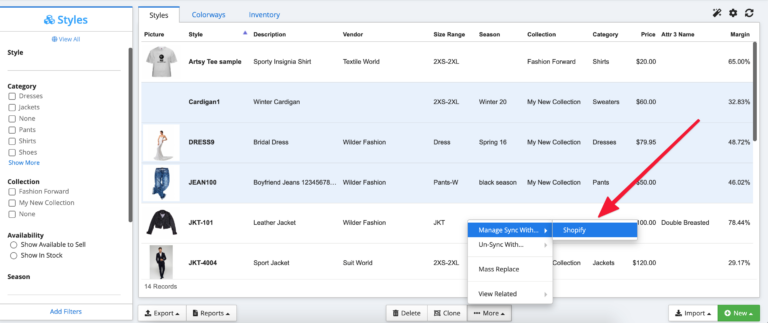The process of sourcing, storing, and selling a company’s inventory is called inventory management. The term refers to your tracking system for each stage of the product life cycle, including the management, warehousing, and processing of both raw materials and finished products.
The purpose of inventory management is to ensure that the right products are in the right place at the right time. To achieve this, you need inventory visibility, which includes knowing how many items to order, when to order them, and where to store them.
So, what happens if your company doesn’t have an effective inventory management system in place? What if you’re unable to find the right balance between having too much inventory in stock or not enough?
In this post, we’re discussing the importance of inventory management, explaining how it works, and breaking down its most important benefits for your business.
Photo by Tiger Lily from Pexels
Why Is Inventory Management Important
Inventory is one of the most important assets a company can have. In inventory-intensive industries, such as food manufacturing and retail, an organization’s inputs and completed products form the foundation of its operation. If there is insufficient inventory where and when it is needed, customers can become dissatisfied. On the other hand, excess inventory comes with its own set of risks, such as the cost of storing and insuring it, as well as the chance of damage, theft, and spoilage.
Because of this, inventory management is crucial for businesses of all sizes. Understanding when to restock, how much to manufacture or buy, how much to pay—but also when and at what price to sell—can all be difficult decisions.
By using an efficient inventory management system, companies can fulfill orders accurately and on time. They can easily track, oversee, and manage inventory and avoid issues like understocking, overstocking, obsolete item stocking, excessive return volumes, and loss of customers.
Inventory management also helps you achieve a balance between supply and demand by aiding in better planning. Consider a situation where there is a high demand for a product but there isn’t enough inventory to meet that demand. Accurate inventory management will help you make sure you have just enough stock available to meet current customer demand.
A strong inventory management strategy results in an organized warehouse which, in turn, leads to more efficient fulfillment plans. Finally, inventory management is crucial if you want to avoid financial bottlenecks. It helps prevent needless tying up of capital in surplus inventory while also improving the company’s liquidity position. With an inventory tracking system in place, business managers can make better-informed decisions about the merchandise in their warehouse.
What Are the Benefits of Inventory Management
Some of the most important benefits of inventory management include:
Increased accuracy and efficiency
Surprisingly, inventory is accurate only 63% of the time for many retail companies. When you consider how harmful an incorrect order may be, this number is quite low.
One of the most important advantages of inventory management is that it decreases the amount of inventory that businesses must keep in stock while at the same time enhancing order accuracy.
Saves money
Having an insight into your inventory means that you will always know how much you have in stock and where it is located, so you can make the most of it. It also means you can keep less inventory in your warehouse or store because orders can be completed from any location on the planet. This results in decreased inventory costs and a lower number of items that remain unsold before they become outdated.
Better data visibility and planning
When examining the advantages of having an inventory management system, it is crucial not to overlook the usefulness of business intelligence. An inventory management system allows you to keep a centralized record of every item, providing a single source for item location, supplier information, specifications, and the total quantity of items currently in stock. This enables you to fine-tune your marketing processes and make informed business decisions.
Reduced labor costs
Businesses are constantly seeking ways to save time and money, and inventory management is one of the most effective methods to do so. Many of the best inventory management systems have functions like barcode scanning that help eliminate time-consuming tasks such as manually entering product numbers. By automating more tasks and freeing up resources, your employees will be able to focus on more critical work and help you grow your business faster.
Satisfied customers
Providing customers with the products they want in a timely manner is a crucial aspect of building and maintaining customer loyalty. Customer satisfaction leads to positive testimonials and repeat business. Moreover, by rapidly and precisely fulfilling customers’ orders, you’ll establish yourself as a trustworthy name in the marketplace.
Photo by Scott Graham on Unsplash
How Inventory Management Works
Inventory management helps companies determine how much stock they have and where that stock is located. It allows you to track products from the point of purchase to the point of sale, allowing you to know when there is a shortage of a certain product and making sure that there is always enough inventory to fulfill orders.
Small businesses usually track their inventory manually and use spreadsheet formulas to determine ROP (reorder points) and amounts. Bigger companies rely on ERP (enterprise resource planning) software, whereas the largest corporations typically choose highly customized SaaS programs for this purpose.
The three methodologies used to account for inventory are weighted-average costing, last-in-first-out (LIFO), and first-in-first-out (FIFO). In most cases, an inventory account is divided into four categories:
- Raw materials – the different materials that an organization buys for its manufacturing process. Before the company can turn these materials into finished products that can be sold, they must undergo extensive processing.
- Goods in process – refers to raw materials that are in the process of being turned into a completed product.
- Finished products — goods that have reached the end of the manufacturing process but have yet to be sold or sent out to the consumers.
- Merchandise — is a term used to describe the completed products that a company purchases from a supplier with an aim to resale to customers.
Various inventory management methods can be used depending on the type of product or business. Materials requirement planning (MRP), just-in-time manufacturing (JIT), days sales of inventory (DSI), and economic order quantity (EOQ) are a few of those methods.
How To Properly Manage Your Inventory
Here are some inventory management strategies that many businesses use:
Audit your stock
Even if you already use sophisticated inventory management software, you should still count your inventory on a regular basis. Companies utilize different techniques, such as a year-end physical inventory that counts every item and regular spot-checking, which is especially useful for products that have stocking issues or move quickly.
Identify low-turn stock
If you have inventory that hasn’t sold in the last year, it is probably time to stop stocking those products. You might also think about other ways to push that item out, such as promotions or special price offers because surplus inventory wastes both money and space.
Track all product information
Keep track of tall the product details for each item in your inventory. Countries of origin, suppliers, barcode data, lot numbers, and SKUs should all be included. It’s also wise to keep track of the cost of each item over time so that you are aware of things like seasonality and scarcity that could affect the price.
Improve your forecasting
Accurate forecasting is critical. Market trends, historical sales data, forecast growth, as well as the overall economy, promotions, marketing activities, and so on should all be factored into your projected sales calculations. The best inventory management software can help you automate inventory forecasting, also known as demand planning, and aid you in making an informed projection about how much inventory will be needed over a long period of time.
The Bottom Line
Inventory management is crucial to an organization’s success because it makes certain that there is always the adequate amount of goods on deck, without a surplus or a lack of items, decreasing stockout and erroneous records opportunities.
The advantages of these systems are undeniable, and more and more businesses will begin to implement them over time, replacing ineffective spreadsheets that need to be updated manually.
Using inventory management software eliminates inventory management errors, resulting in a business that is more efficient, more profitable, and well-equipped to meet every customer’s needs.







